1. Woodstock Revival
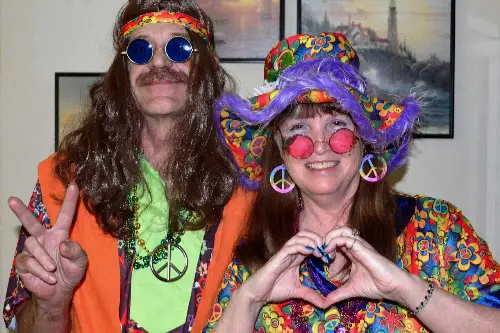
Boomers might host a Woodstock-themed party as a celebration of their youth or the era they idealized. Tie-dye, flower crowns, and classic rock playlists feel like a direct reflection of the cultural revolution they experienced. They remember anti-war protests and the counterculture movement firsthand or through peers. To them, it’s not just a theme—it’s a statement.
Younger generations, though, often interpret Woodstock more as a music festival vibe. For Millennials and Gen Z, it blends into Coachella aesthetics, with glitter makeup and boho fashion. The historical significance sometimes gets lost in favor of Instagram-friendly looks. That shift from counterculture protest to curated fun highlights a generational reframe of what music festivals mean.
2. Harry Potter House Party
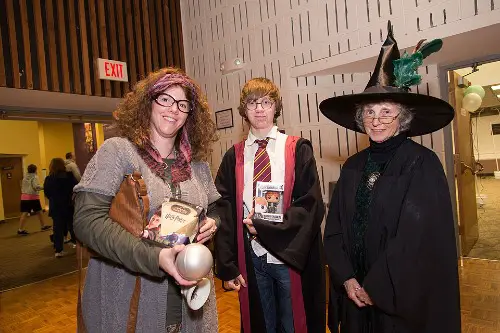
For Millennials, Harry Potter was practically a cultural rite of passage. Sorting into Hogwarts houses, referencing the books, and decorating with floating candles feels like revisiting their teen years. They experienced midnight book releases and grew up alongside the characters. To them, it’s nostalgia-laden magic.
Gen Z, however, inherited Harry Potter as an established franchise. They may still enjoy the movies but often view the obsession with house sorting as outdated. They’re more likely to critique the franchise or remix it into memes. The split comes down to growing up with a cultural juggernaut versus encountering it as pre-packaged lore.
3. Roaring Twenties Speakeasy
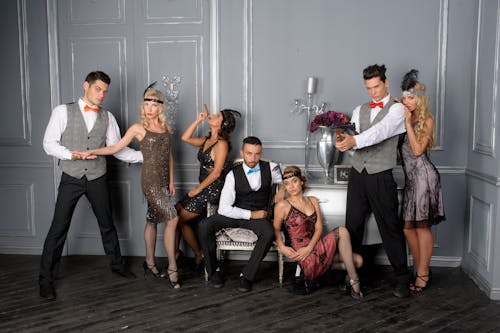
When older generations throw a speakeasy-themed party, they often lean into the glam of flapper dresses, jazz records, and bootleg-style cocktails. For them, it’s a nostalgic nod to the golden age of Hollywood portrayals rather than lived experience. Gen Z, however, sometimes sees this theme as removed from their own references, associating the 1920s more with historical documentaries than fun. The gap shows up when younger guests dress in modernized takes on the theme, while older hosts prefer a more “authentic” prohibition-era vibe.
The reason this theme highlights a generational divide is that the 1920s imagery was recycled endlessly in mid-century media. Boomers and Gen X grew up with movies romanticizing the speakeasy, so it feels instantly recognizable to them. Younger people tend to find the “rules” about costumes a little outdated or fussy. That clash between history as entertainment versus history as fashion statement creates subtle tension.
4. 80s Neon Dance Party
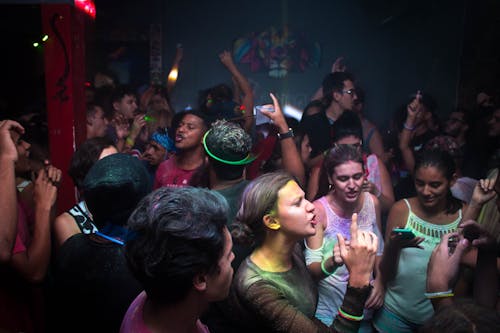
For Gen X and Millennials, an 80s party is like slipping into a collective memory of Madonna, MTV, and Pac-Man. Neon leotards, teased hair, and cassette tapes feel like direct callbacks to their formative years. They might go all out recreating a mall arcade atmosphere because they actually spent weekends there. It’s nostalgia mixed with a touch of irony.
Gen Z, though, often sees the 80s as an aesthetic rather than a lived memory. Their version might focus more on Stranger Things-inspired outfits or synthwave playlists found on TikTok. While older generations want accuracy, younger ones remix the past with current trends. That difference in approach reveals how one group lived it while the other reinterprets it.
5. 90s Sitcom Night
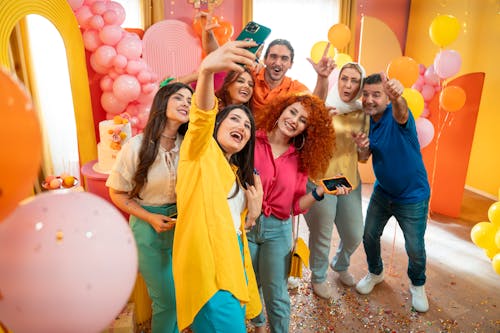
Millennials and older Gen Zers often cling to sitcoms like Friends, Fresh Prince, or Seinfeld as cultural anchors. Hosting a party where everyone dresses like a favorite character can feel like stepping into a warm, familiar living room. The TV shows that shaped their sense of humor become the backdrop. It’s more than costumes—it’s comfort viewing made tangible.
Younger Gen Z guests might only know those sitcoms through clips on streaming services or parents’ DVD sets. They’re more likely to parody or exaggerate the characters rather than treat them with nostalgia. To them, the 90s sitcom world is a kitschy aesthetic, not a cultural landmark. That difference shows how streaming reshaped access to “classic” TV.
6. TikTok Trends Party
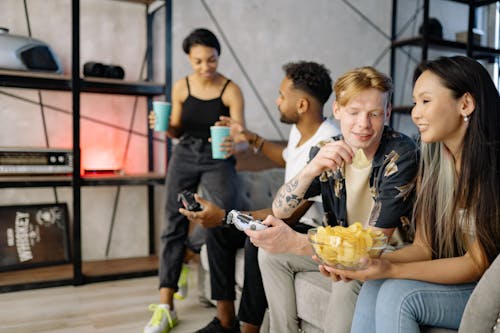
A party themed around viral TikTok dances, foods, or aesthetics feels instantly natural to Gen Z. They see TikTok as a cultural hub where micro-trends and memes live. A “Ratatouille the Musical” corner or a whipped coffee station makes sense in their world. They’re in on the joke.
Older generations might find this baffling or overwhelming. TikTok’s rapid turnover of trends feels chaotic to them, and they may struggle to keep up. To Millennials or Boomers, the idea of immortalizing fleeting memes seems strange. That disconnect exposes how speed of culture consumption widens generational gaps.
7. Y2K Throwback
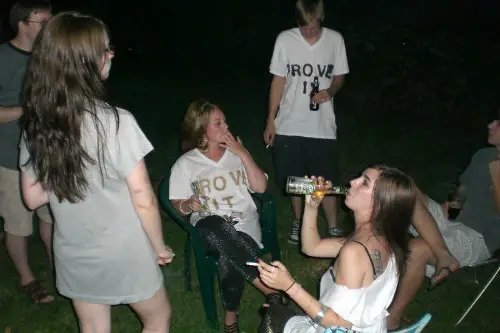
Millennials in particular feel a wave of nostalgia for the Y2K era, with butterfly clips, low-rise jeans, and boy-band playlists. A party with inflatable furniture and Tamagotchi centerpieces takes them straight back to their teen bedrooms. They remember the excitement and anxiety around the year 2000, from dial-up internet to the “Y2K bug” panic. This theme feels personal to them, not abstract.
For Gen Z, Y2K fashion is retro-chic but detached from the emotional context. They discovered it through Instagram thrift culture and celebrity style rather than firsthand memory. A Y2K party might mean chunky highlights and velour tracksuits, but without the same emotional attachment. The generational divide is clear: lived nostalgia versus curated aesthetic.
8. Reality TV Icons Party

Millennials might plan a party where everyone comes dressed as early 2000s reality stars. Think Paris Hilton, The Osbournes, or cast members of The Simple Life. That era of reality TV was campy, chaotic, and formative for them. It’s a chance to laugh about how wild TV once was.
Gen Z, on the other hand, associates reality TV more with influencers, Love Island, or The Bachelor. Their icons look polished and curated, shaped by social media’s constant presence. The humor hits differently because their reality stars are actively branding themselves. That difference makes the theme feel nostalgic to one group but ironic to another.
9. Great Gatsby Glam
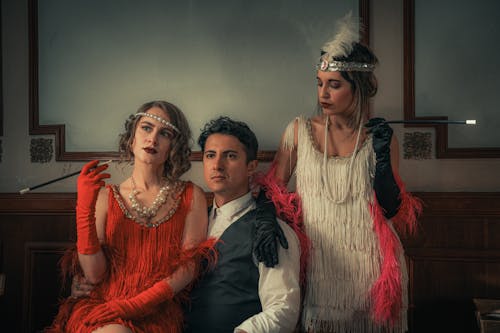
The Gatsby theme surged in popularity after the 2013 film adaptation, especially among Millennials. Lavish parties with champagne towers, jazz, and sequins gave them a chance to play at excess. They often see it as fun escapism with literary flair. The vibe is part book report, part Instagram aesthetic.
Older generations may find this curious since they connect The Great Gatsby with required reading lists. For them, Fitzgerald’s story wasn’t aspirational—it was tragic and critical of wealth. Seeing it turned into a glamorous party can feel tone-deaf. That difference between critique and celebration highlights a generational shift in interpretation.
10. Meme Costume Party
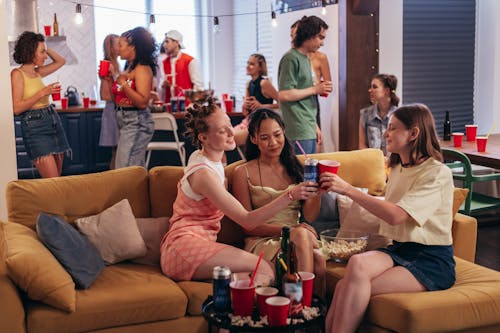
Gen Z thrives on meme culture, so a party where guests dress as viral jokes feels natural. You might see costumes ranging from “woman yelling at cat” to “Shrek in Crocs.” They love the chaos and absurdity of memes made flesh. It’s humor that lives in the now.
Millennials and older groups may feel out of their depth. Memes evolve so quickly that a costume funny last month could already feel outdated. The ephemeral nature makes it hard for them to keep up or join in fully. This highlights how humor evolves faster than generational memory.
11. Classic Hollywood Glam
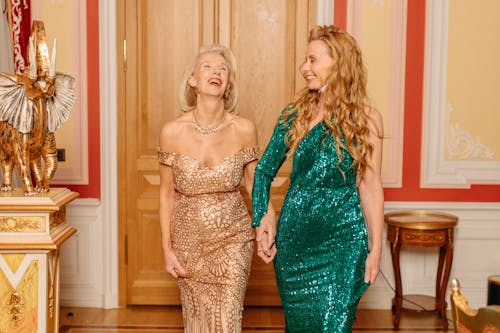
Boomers and even some Gen Xers may lean into Old Hollywood parties, inspired by stars like Marilyn Monroe or Humphrey Bogart. Black-and-white backdrops, martinis, and big band music set the stage. It recalls a time when movies were cultural events. For them, it’s timeless sophistication.
Younger generations, though, often lack personal attachment to these stars. They might see the aesthetic as overly formal or inaccessible. Instead of glamour, it feels like playing dress-up in grandparents’ clothes. The gap shows how once-universal icons lose relevance over time.
12. Emo and Pop-Punk Bash
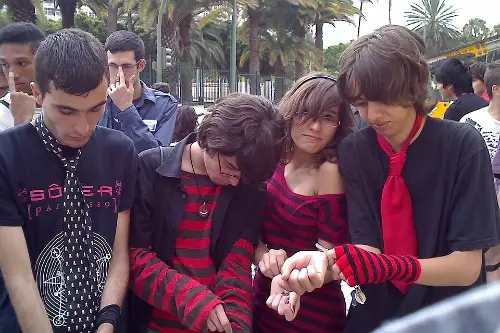
For older Millennials, emo and pop-punk defined high school identity. Parties filled with eyeliner, studded belts, and bands like My Chemical Romance feel like reliving a scene phase. It’s cathartic and funny at once. They remember the angst vividly.
Gen Z has revived emo aesthetics through TikTok but with a different flavor. They might blend it with e-girl makeup or hyperpop references. To them, it’s revival, not memory. The generational divide is clear between lived subculture and rebranded fashion trend.
13. Cottagecore Picnic

Gen Z’s love of cottagecore—complete with flowy dresses, jam jars, and pastoral Instagram filters—has led to themed picnics. They romanticize rural life as cozy and whimsical. It’s about escaping digital noise through curated simplicity. The aesthetic lives mostly online.
Older generations may find it ironic or confusing. Many Boomers and Gen Xers grew up in or near rural life and remember it as work, not fantasy. To them, milking cows and making bread weren’t Instagrammable moments. That disconnect between lived labor and online aesthetic shows a generational gap in how “the simple life” is imagined.
This post 13 Party Themes That Quietly Reveal Generational Gaps was first published on Greenhouse Black.
